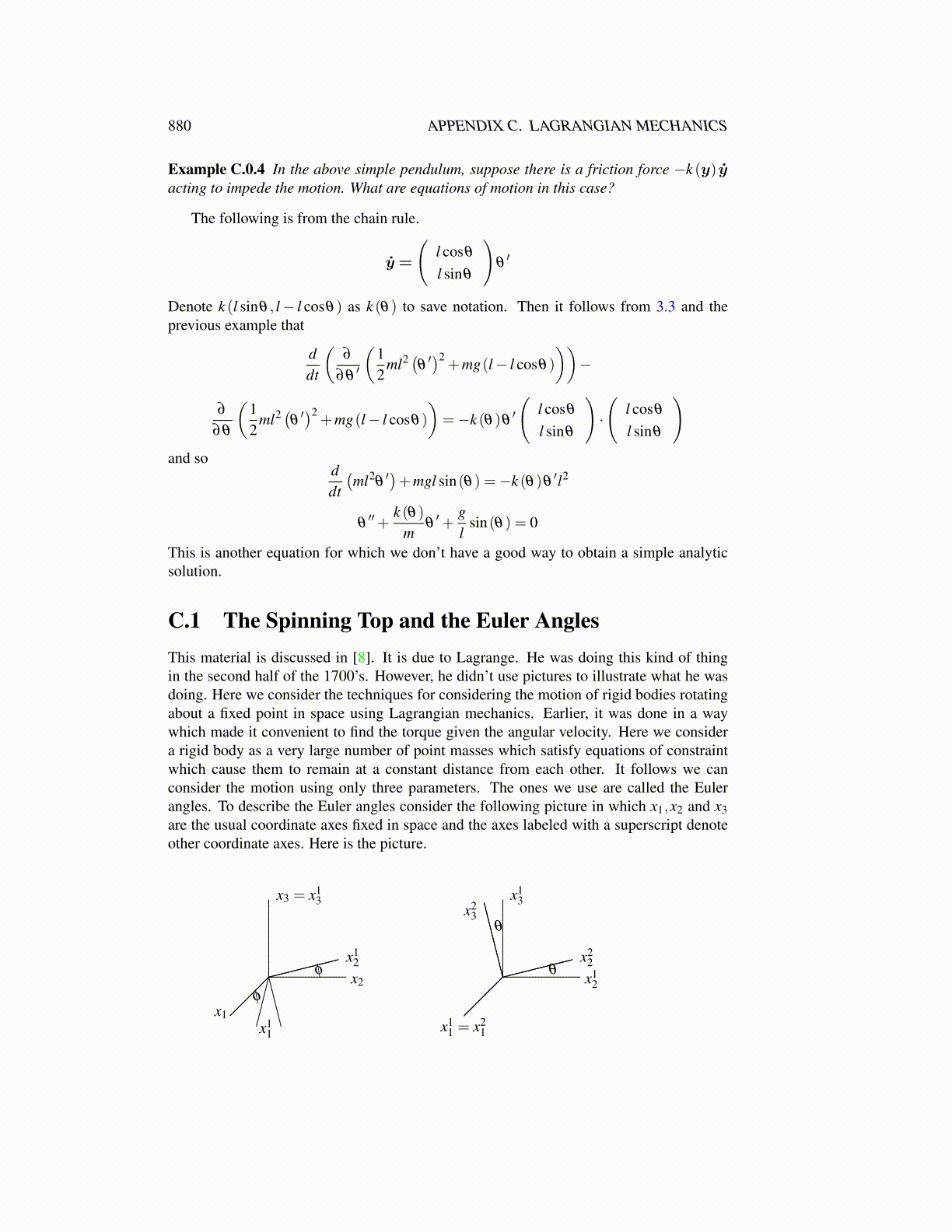
880 APPENDIX C. LAGRANGIAN MECHANICS
Example C.0.4 In the above simple pendulum, suppose there is a friction force −k (y) ẏacting to impede the motion. What are equations of motion in this case?
The following is from the chain rule.
ẏ =
(l cosθ
l sinθ
)θ′
Denote k (l sinθ , l− l cosθ) as k (θ) to save notation. Then it follows from 3.3 and theprevious example that
ddt
(∂
∂θ′
(12
ml2 (θ′)2
+mg(l− l cosθ)
))−
∂
∂θ
(12
ml2 (θ′)2
+mg(l− l cosθ)
)=−k (θ)θ
′
(l cosθ
l sinθ
)·
(l cosθ
l sinθ
)and so
ddt
(ml2
θ′)+mgl sin(θ) =−k (θ)θ
′l2
θ′′+
k (θ)m
θ′+
gl
sin(θ) = 0
This is another equation for which we don’t have a good way to obtain a simple analyticsolution.
C.1 The Spinning Top and the Euler AnglesThis material is discussed in [8]. It is due to Lagrange. He was doing this kind of thingin the second half of the 1700’s. However, he didn’t use pictures to illustrate what he wasdoing. Here we consider the techniques for considering the motion of rigid bodies rotatingabout a fixed point in space using Lagrangian mechanics. Earlier, it was done in a waywhich made it convenient to find the torque given the angular velocity. Here we considera rigid body as a very large number of point masses which satisfy equations of constraintwhich cause them to remain at a constant distance from each other. It follows we canconsider the motion using only three parameters. The ones we use are called the Eulerangles. To describe the Euler angles consider the following picture in which x1,x2 and x3are the usual coordinate axes fixed in space and the axes labeled with a superscript denoteother coordinate axes. Here is the picture.
φ
φ
x3 = x13
x1x1
1
x2
x12
θ
θ
x13
x23
x11 = x2
1
x12
x22